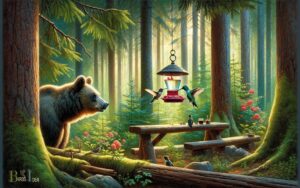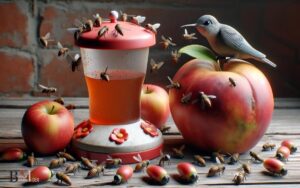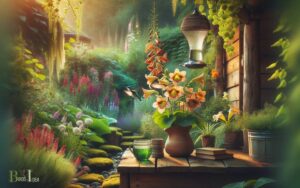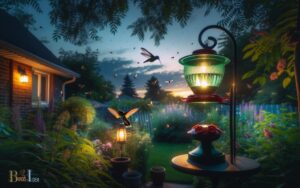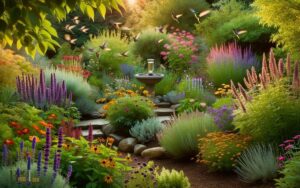Do Mexican Petunias Attract Hummingbirds: Yes!
Yes, Mexican petunias (Ruellia simplex) are known to attract hummingbirds. These flowering plants produce vibrant blooms that can entice hummingbirds to visit your garden for their nectar.
Invite the delightful flitter of hummingbirds into your garden with the robust and colorful blooms of Mexican petunias.
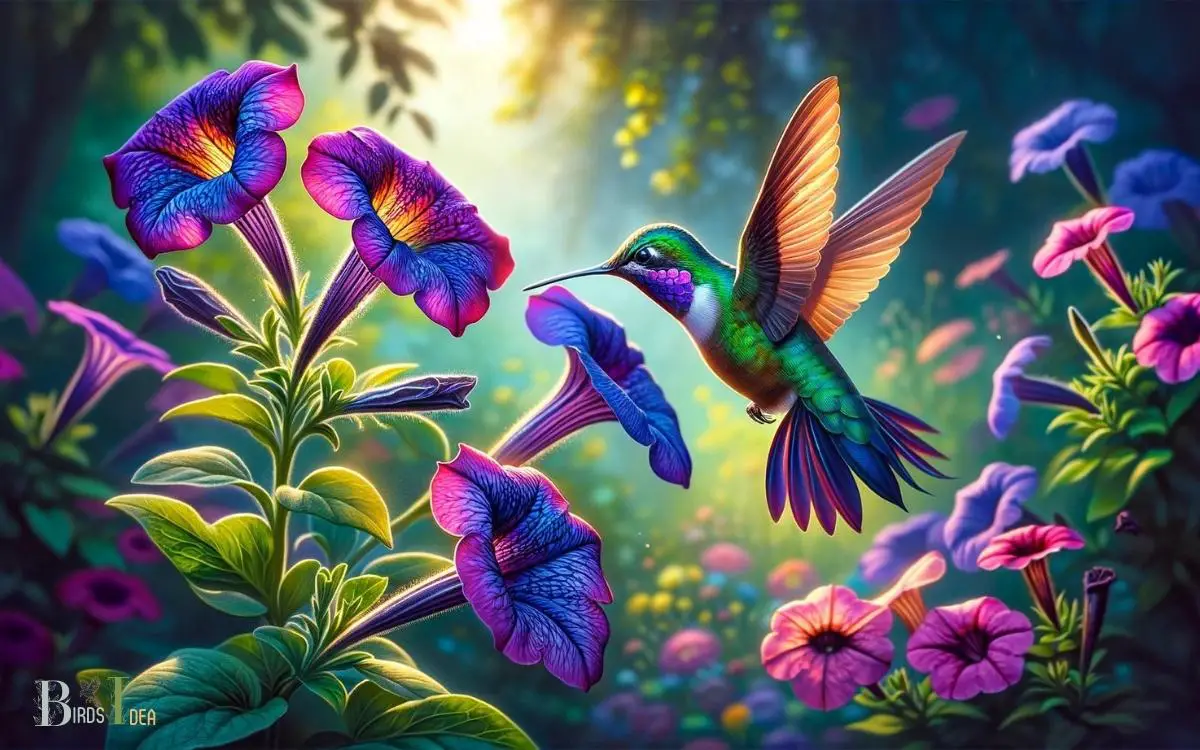
Key Takeaway
The Attraction Mechanism of Mexican Petunias
The Mexican petunias attract hummingbirds through their vibrant, tubular flowers and sweet nectar.
These flowers produce ample amounts of nectar, which is a vital food source for hummingbirds.
The tubular shape of the flowers is specifically suited to the long, slender beaks of hummingbirds, allowing them to easily access the nectar within.
Additionally, the bright and striking colors of the Mexican petunia flowers serve as a visual attractant for hummingbirds, as these birds are drawn to vivid hues.
The combination of these factors makes Mexican petunias highly appealing to hummingbirds, effectively luring them into gardens and outdoor spaces.
As a result, these flowers play a crucial role in providing sustenance and attracting these delightful, tiny birds for enthusiasts and nature lovers to enjoy.
Factors That Influence Hummingbird Visits
When considering the factors that influence hummingbird visits, it’s essential to take into account nectar-rich flower colors, flower shape and size, as well as seasonal blooming patterns.
These elements play a crucial role in attracting hummingbirds to specific flowers, as they are drawn to bright, tubular-shaped blooms that provide ample nectar.
Understanding how these factors influence hummingbird visits can help in creating a welcoming environment for these fascinating birds.
Nectar-Rich Flower Colors
Hummingbirds are attracted to nectar-rich flower colors due to their vibrant and vivid hues, which signal a high energy reward.
The following factors influence which flower colors attract hummingbirds:
- Red: This color is particularly attractive to hummingbirds and is often associated with tubular-shaped flowers containing high amounts of nectar.
- Orange: Similar to red, orange flowers are highly appealing to hummingbirds and are often rich in nectar, providing a valuable energy source for these birds.
- Pink: Lighter shades of pink also attract hummingbirds, especially when the flowers produce abundant nectar.
- Purple: Certain shades of purple, especially those with a reddish tint, can also catch the attention of hummingbirds and may contain high levels of nectar.
Understanding the significance of flower colors in attracting hummingbirds can help in creating a garden that is conducive to these fascinating birds.
Flower Shape and Size
Attracting hummingbirds to a garden can also depend on the shape and size of the flowers, which, when nectar-rich and vibrant in color, serve as crucial factors influencing the visits of these fascinating birds.
Hummingbirds are attracted to tubular-shaped flowers that allow them to insert their long, slender bills and reach the nectar hidden within.
Additionally, they prefer flowers that are not too large, as they need to be able to hover close to the blooms while feeding.
The table below provides examples of flower shapes and sizes that are particularly appealing to hummingbirds.
| Flower Shape | Flower Size |
|---|---|
| Tubular | Small to Medium |
| Trumpet-like | Compact |
| Funnel-shaped | Petite |
Understanding these preferences can help gardeners choose the right flowers to attract hummingbirds to their gardens.
Seasonal Blooming Patterns
The timing of blooming patterns in a garden can significantly influence the visits of hummingbirds, as they are attracted to specific flowering plants based on the availability of nectar.
Factors that influence hummingbird visits include:
- Seasonal Blooms: Hummingbirds are more likely to visit gardens with plants that bloom during their migration or breeding seasons.
- Continuous Blooming: Plants that have a prolonged blooming period provide a consistent nectar source, attracting hummingbirds throughout the season.
- Synchronized Blooming: Having a variety of plants that bloom at different times ensures a continuous nectar supply, increasing the likelihood of attracting hummingbirds.
- Native Plants: Hummingbirds are naturally attracted to the blooms of native plants, so incorporating local flora can enhance their visits.
Understanding these factors can help gardeners create an environment that entices hummingbirds throughout the year.
How to Plant Mexican Petunias to Attract Hummingbirds?
To attract hummingbirds with Mexican petunias, plant them in well-drained soil and full sunlight. Mexican petunias thrive in moist, well-drained soil, so it’s essential to ensure that the planting area has good drainage.
When planting, space the Mexican petunias about 12 to 18 inches apart to allow for adequate air circulation and prevent overcrowding as they grow.
Adding a layer of mulch around the plants can help retain moisture and regulate soil temperature.
It’s also important to water the plants regularly, especially during dry periods, to keep the soil consistently moist.
By providing the right growing conditions, such as well-drained soil and ample sunlight, gardeners can attract hummingbirds to their outdoor space with the beautiful blooms of Mexican petunias.
Observing Hummingbird Behavior Around Mexican Petunias
Mexican petunias create an inviting environment for hummingbirds, often leading to fascinating observations of their behavior in the vicinity. Observing hummingbird behavior around Mexican petunias can be an exciting experience.
Here are a few common behaviors to look out for:
- Feeding: Hummingbirds are often seen flitting from flower to flower, sipping nectar from the tubular blooms of Mexican petunias.
- Hovering: These agile birds exhibit impressive hovering skills as they move around the petunias, probing for nectar.
- Chasing and territorial displays: Male hummingbirds may engage in aerial chases to defend their feeding territory around the Mexican petunias.
- Courtship displays: During the breeding season, lucky observers may witness elaborate courtship displays as male hummingbirds try to impress the females visiting the petunias.
Tips for Creating a Hummingbird-Friendly Garden
Creating an environment that appeals to hummingbirds can be achieved by strategically planting a variety of nectar-rich flowers.
Hummingbirds are attracted to brightly colored tubular flowers such as bee balm, salvia, and trumpet vine.
To create a garden that is irresistible to these delightful birds, consider incorporating the following nectar-rich flowers:
| Flower | Color | Blooming Season |
|---|---|---|
| Bee Balm | Red, Pink | Summer |
| Salvia | Red, Purple | Summer-Fall |
| Trumpet Vine | Orange | Summer-Fall |
| Coral Honeysuckle | Orange-Red | Spring-Summer |
| Cardinal Flower | Red | Summer |
These flowers not only provide a vital food source for hummingbirds but also add vibrant color and beauty to the garden.
By including these nectar-rich flowers, one can attract and support these fascinating creatures in their garden.
Other Plants That Attract Hummingbirds
Apart from Mexican petunias, there are several other plants that can attract hummingbirds to your garden.
These plants include:
- Salvias: Also known as sage, these plants produce vibrant, tubular flowers that are rich in nectar, making them a favorite of hummingbirds.
- Bee Balm: With its unique, colorful blooms, bee balm is a popular choice for attracting hummingbirds to the garden.
- Trumpet Vine: This vigorous vine produces large, trumpet-shaped flowers that are highly appealing to hummingbirds.
- Columbine: The delicate, bell-shaped flowers of columbine not only add beauty to the garden but also serve as a food source for hummingbirds.
Conclusion
Mexican petunias have been known to attract hummingbirds due to their bright and trumpet-shaped flowers.
By planting these beautiful flowers in a garden, one can create a welcoming environment for hummingbirds to visit and enjoy.
With their vibrant colors and sweet nectar, Mexican petunias are like a magnet for hummingbirds, creating a breathtaking and lively scene in any outdoor space.

